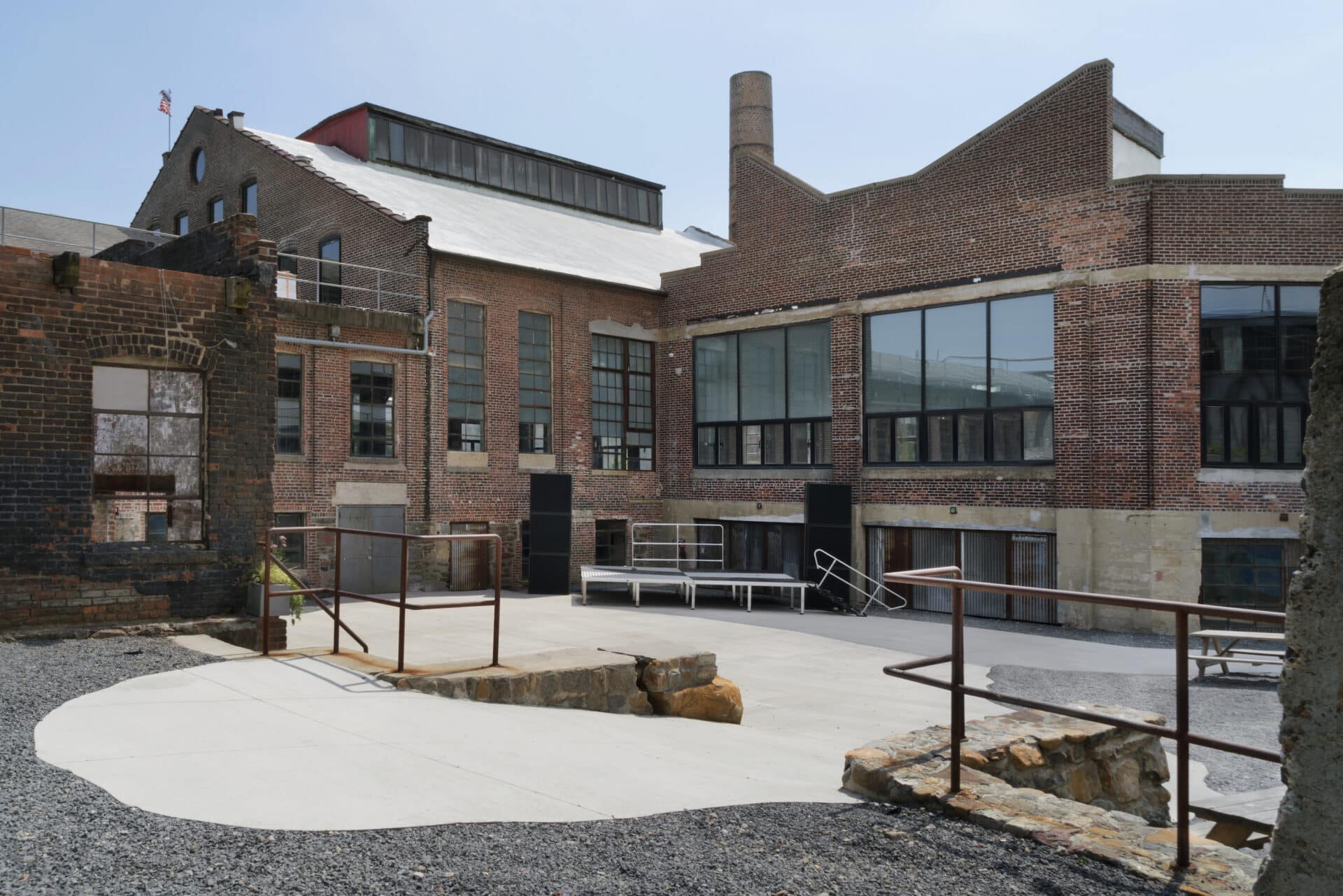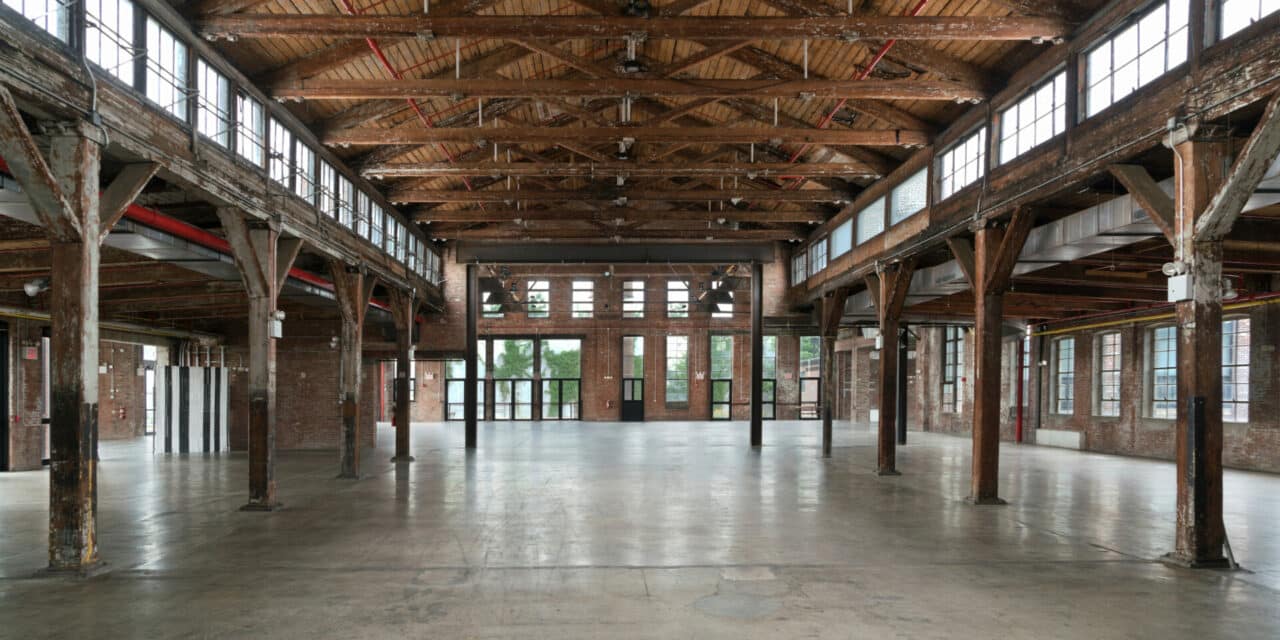Bookings Up Double Over 2022
FACTORY FRESH: Knockdown Center in Queens, New York, underwent a multi-million renovation from 2011 to 2015. (Courtesy Venue)
History can’t be manufactured, but it can be painstakingly preserved.
Such is the case with Knockdown Center in Queens, New York, a multi-venue performance space that can host multiple events per night, with indoor capacity of 3,100 and an outdoor space that can accommodate 1,400.
The 50,000-square-foot building dates back 100 years. It was initially called the Gleason-Tiebout glass factory, then the Manhattan Door Factory. It got its “Knockdown” name from the innovative knock-down door frame that was invented there, which was shipped in pieces and installed into existing walls, a concept that revolutionized building construction and remains an industry standard.
The venue plays host to festivals and has found a place among the competitive New York club and theater circuit, with upcoming headline shows by Hot Chip, Panda Bear, TV Girl, and Black Country, New Road.
“What has changed recently is that we are solidifying our reputation as a venue that doesn’t just do special events, but is a very plausible and great experience for national tours doing headline shows with acts that in previous years you might have expected to be at Brooklyn Steel or Webster Hall,” says Jeff Klingman, talent buyer at Knockdown Center. “More artists are getting excited about the possibility of doing their show here and not what might be the expected look” of a conventional venue.
Knockdown Center co-founder and executive director Tyler Myers says he and the venue owner, “a gentleman who likes to remain private” whose grandfather purchased the building in the 1950s, saw the potential for a live music venue in the early 2010s. However, without a liquor license, it was a struggle to make financial sense on hard ticket events.
Shows from 2010 to 2016 included some Red Bull Music Academy events and Carnegie Hall’s “West Side Story.”
“In 2015, we did an MIA show with Live Nation before securing a liquor license, which became an arduous process, said Myers. “We did that show dry and struggled through that year financially, but we were able to make it. About a year later, we were able to pour liquor and operate in a normal way.”

IN RUINS: Knockdown Center’s outdoor “Ruins” space is booked solidly through summer weekends, with venue executives saying bookings have doubled over last year. (Courtesy venue)
“More normal” operations are still somewhat atypical.
Concurrent events take place at the 3,100-capacity Main Hall, an outdoor space called Ruins, smaller club spaces and the “Basement” techno club. Three ticketed shows can run simultaneously, especially during the summer at Ruins.
Along with multiple event spaces comes multiple configurations. The Ruins space can be set to 1,400 for a more spread-out experience or 1,200 when fans are more focused on the action onstage. “That’s more based on the feeling of the show than on any space limitations,” Klingman says.
The main indoor space has two configurations, with an “atrium setup” at 1,875 capacity to go along with the 3,100-capacity setup. This involves physically taking down the stage and moving it to another location on the main floor.
“The PA and lights all stay in the same place, but we break down the stage and move it physically by hand,” explained Myers, whose experience includes more than a decade with House of Blues as corporate operations director supporting 13 national venues and opening five. He moved to Brooklyn to follow his now-wife. The couple was married at Knockdown Center before it publicly opened.
About 60% of the main-stage indoor programming takes place in the atrium setup, which can be upgraded to 3,100 if there’s enough ticket demand.
From 2011 to 2015, “multiple millions” of dollars worth of renovations took place, mostly related to ingress and egress as well as major overhaul to the bathrooms specifically adding dozens of toilets.
Knockdown Center operates solely a hard-ticket venue, typically on Thursday through Sunday. Although open to one-off shows mid-week, Myers and Klingman say event nights have to make sense and continue the venue’s mission of credibility and music discovery.
“We don’t want to force anything and we’re busy enough we don’t have to,” Myers said. “I think it’s a testament to that strategy that our calendar is twice as full year over year. And I think for 2023 was the first year that we really had to sit down and have some debates about which way we wanted some Saturdays to go and some weekends Ruins shows to go.”
Upcoming shows include Hot Chip on June 3, Tiki Disco June 11, the Night Out pride event presented by Pitchfork + Them featuring Tinashe on June 17, Panda Bear & Sonic Boom July 21, Bonobo Presents Outlier on July 29, and Outline festival Aug. 5 topped by Crumb, U.S. Girls, Model/Actriz and Palm. Metal festival Desert Fest 2023, topped by sludge bands Melvins and Boris, takes place in August. “A metric for success for me would be, does somebody play here and do they sell a few more tickets because it’s here? I want to be like that.” Boxoffice reports include 3,000 tickets sold for Turnstile in May 2022, 1,400 for Mira that same month, and 1,875 for Jai Paul in April 2023.
Myers says part of credible curation means working with established partners in particular lifestyle genres, with examples being upcoming events with Soul Summit, drag show Bushwig and UK-based Desert Fest.
“For me it’s about being able to hold space for things that I thought needed this venue or needed this scale in order to continue to thrive for their particular audiences, rather than assuming I could do better than that,” Myers said. “It’s just about partnership and listening and finding folks who have found success themselves and needed space in order to continue that trajectory and to welcome more people into their event.”
Located somewhat centrally – within a half-hour walk from Ridgewood, Bushwick and not much father from East Williamsburg, Knockdown Center has found itself in the middle of a burgeoning club scene and fitting right in.
“Since the pandemic, the neighborhood has really become a centralized location for concerts and nightlife, generally speaking,” Myers said. “We’re within a half mile of Avant Gardner and Elsewhere, the neighborhood is jumping and with that, folks plan to come this way, they’re going into Manhattan less and and coming here more at night. And so that helps everybody.”







